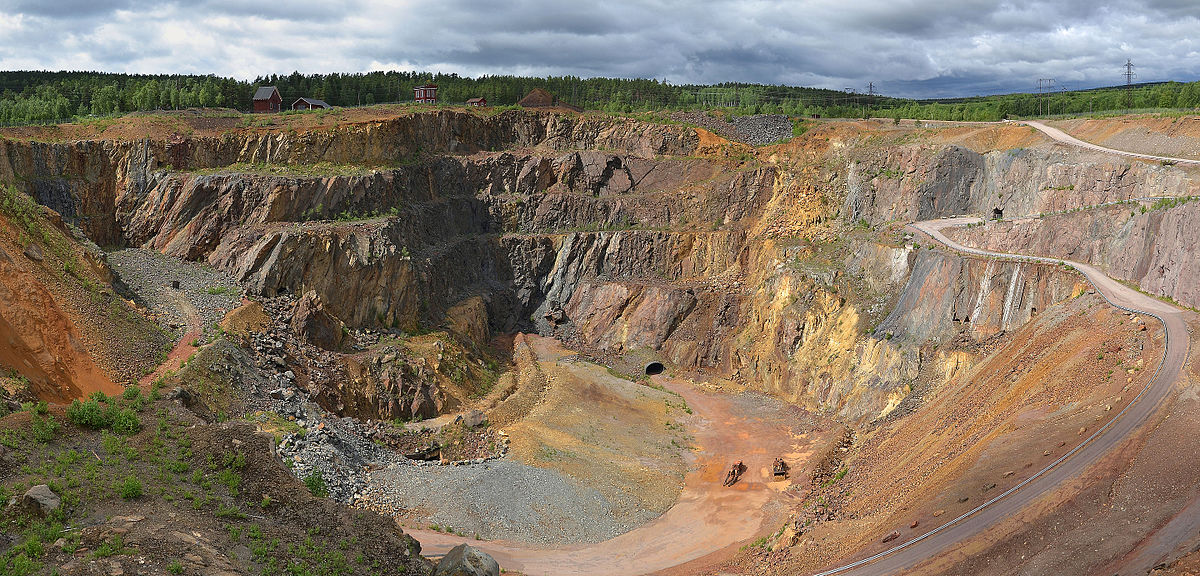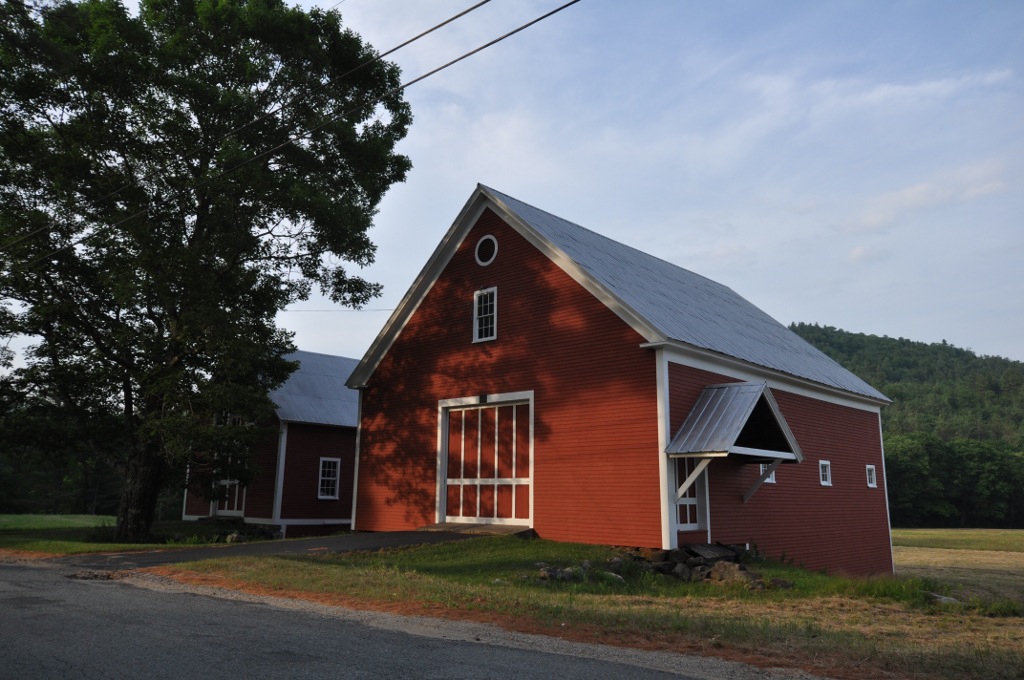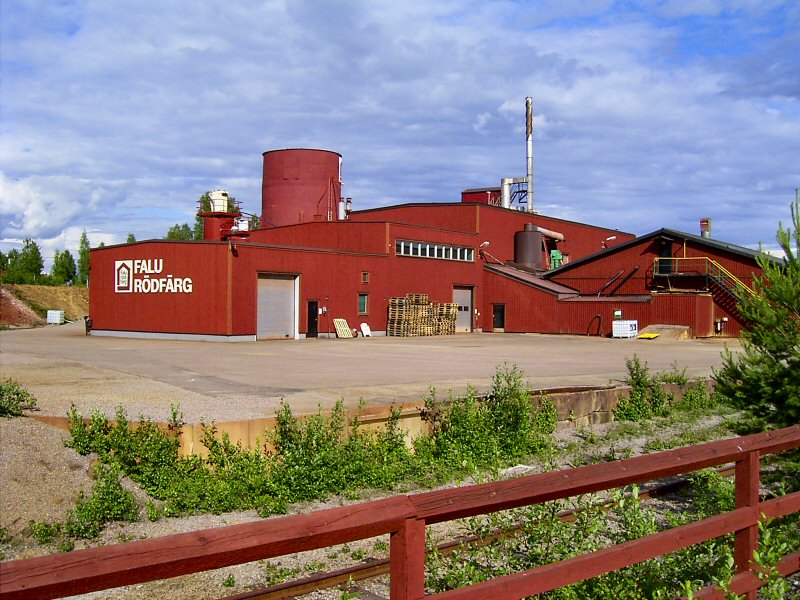Falu Red, The Color of Bucolic Barns and Mummified Swedes
Cultural histories of unusual hues.
.
.
.
.
.
.
.
.
.
According to legend, there was once a goat named Kåre who lived with his shepherd boy in rural Sweden. One day, Kåre returned home with his horns stained a bright, mineral red. Instead of being frightened by his newly Baphomet-looking livestock, the boy summoned all his entrepreneurial impulses and set to work figuring out how he could make money from this occurrence. His goat had fallen headfirst into a pile of earthly riches, discovering a patch of copper-laden land, russet soil and dusty yellow stones.
This site would become the famous copper mines of Falun, the source of much of Sweden’s wealth throughout the Middle Ages and the reason we have the term “barn red,” for it was here that Swedes discovered the preserving and protective properties of copper, iron ochre, silica, and zinc. Mixed with linseed oil, these minerals became a deep warm red paint, which was applied to the sides of houses and barns throughout Scandinavia and later, the east coast of America.
Falu red was made from the byproducts of the mining process; the pits weren’t dug for the sake of paint. The copper mined in Falun would be used to fund Sweden’s military advances throughout the 17th, and 18th centuries, including the Great Northern War. (The country even tried to switch over to copper currency for a time, a failed experiment that ended with a public beheading that “greatly pleased the Swedish people.”) Many would die in the Falun mines, suffocated, crushed, or burnt alive. Their bodies would be found later, preserved by the same hard mineral matter that they were seeking to excavate, dark red mummies covered in sulfate crystals, their muscles seemingly turned to stone. The most famous example was a man named Fet-Mats who was discovered in 1719, over 40 years after he drowned in a poorly placed tunnel. His former fiancée identified the body. For decades, Fet-Mats was displayed in a glass case in the Stora Kopparbergs Church like some plebian version of Sleeping Beauty. The poor guy reached his final resting place in 1930, nearly 300 years after his death, but not before inspiring a folk ballad, a short story, and a Wagner libretto.)
In 1734, the famous Swedish naturalist Carl Linnaeus visited the Falun copper mine. He was greatly disturbed by the conditions he observed. According to the book, A Most Damnable Invention: Dynamite, Nitrates, and the Making of the Modern World, Linnaeus was particularly bummed that the workers were “not slaves or war prisoners, but his fellow countrymen who toiled under barbaric and inhumane conditions.” He wrote:
The mine is more terrifying than the Hades as described by classical writers and Hell as painted in the sermons of our clergy… The sulfurous smoke poisons the air and kills everything growing, and fills the cavities of the mine with evil fumes, dust, and heat. Here 1,200 men labour shut off from the light of the sun, slaves under the metal, less men than beasts, surrounded by soot and darkness… these damnati work naked to the waist and have before their mouths a woolen cloth to prevent them from breathing too much smoke and dust. They cannot take a breath of pure air, sweat streams from their bodies as water out of a bag.

By Pudelek – Own work, CC BY-SA 4.0, Link
And lest you think this was just par for the course for 18th-century miners, Swedish historian Gösta E. Sandstorm wrote that the Falu mine “constituted a singularly outstanding example of brutal and technically backward mining practices.” Unfortunately, the Falu mines became somewhat of a model for other mines in the region, and soon the horrors of those burning tunnels spread south and west as the Industrial Revolution began to sweep across Europe and the demand for metal ore rose ever higher.
The Falun Mine operated for a millennium. It was finally shut down in 1992, but not before the arsenic and lead poisoned the surrounding land, destroying vegetation and creating a massive crater in the landscape. Tourists can (and do) visit the location—known today colloquially as the Great Pit, an unromantic yet accurate nickname—to see the deadly hole in the ground and purchase red-painted wooden goats, tributes to Kåre. If you believe the legend, it’s reasonable to say that a wayward goat from the ninth century is the reason my front door is painted red. That goat might even be the reason I bought a small brown house in the middle of nowhere—when I saw it, it had been empty for years. But even though squirrels had moved into the walls and woodpeckers had drilled holes in the log siding and hunters had set up deer stands in the brambly backyard, that front door was barn red. In the colorless winter landscape of inland Maine, it felt like a sign.

By Magicpiano – Own work, CC BY-SA 3.0, Link
These days, barns are red primarily because tradition dictates it be so, and people like the familiarity of a red barn sitting next to a white clapboard house. It’s visual shorthand for rural culture, particularly in northern places. It can also be a practical decision. Early American settlers found that barns painted with a mixture of skimmed milk, lime, and red iron oxide created an effective sealant against the elements, delaying decay. It also kept the barns warmer in the wintertime since the dark rusty red absorbed more of the sun’s rays than the bleached color of natural wood. (According one to folk belief, another reason farmers painted their barns red was so that cows could find their way home, but since cattle are colorblind to red and green, this likely wouldn’t have worked.) Painting your barn red may also have been a good way to keep the murder rate down in your small town, since some historians have linked the prevalence of white barns (painted with lead paint) to higher rates of violent crime in certain parts of 19th century rural America.
While American settlers adopted Falu red mainly for their barns, Northern Europeans used the color for any number of structures—houses, barns, weekend cottages, town halls, churches, windmills, etc. Supposedly, the paint rose to popularity because of its chromatic similarities to brick red, and since rich people owned brick houses, the Falu paint was a way to get the look for less. (Red ochre, the substance that makes red paint red, is plentiful and cheap because there is so much of it—it’s formed because of the nuclear fusion in dying stars, as Google employee Yonatan Zunger helpfully explained.) There is a Finnish saying, punainen tupa ja perunamaa, meaning “a red house and a potato field,” which suggests that all one needs to be happy is those simple things: a house, a field, some starch. Swedish songwriters have used a similarly nostalgic image: den röda lilla stugan invid grinden (“the little red cottage by the wicket”) to evoke country life.

By Lapplaender – photo taken by Lapplaender, CC BY-SA 2.0 de, Link
Falu red is such an iconic color for Swedish homes that, when in 2014 artist Mikael Genberg attempted to raise $15 million to send a self-assembling house to the moon, he specified that it would be red with white gables to symbolize a “typical Swedish red cottage.” (His previous work includes building a little red tree house in a 130-year-old oak tree, which he called “Hotel Woodpecker” and a little red house submerged in a lake, which he called “The Utter Inn.”) Genberg even got Falu Rodfarg—the 250-year-old paint company that produced Falu red—on board with the plan. Although the project is a literal moonshot, and despite the fact that Genberg didn’t reach his 2014 goal, he’s still trying to make The Moonhouse happen. I, for one, wish him the best of luck. If things keep going the way they are here on earth, I might trade my cabin in Maine for a little red house on the moon, complete with a basalt backyard and a handful of moon-grown potatoes.

